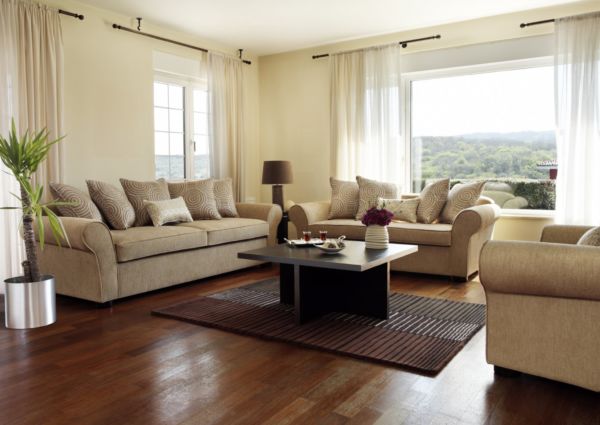What Are the Best Drapes for Keeping Out Heat?
June 24, 2014

Most homeowners only see drapes as part of their home’s interior fashion. But they have a functional use as well: keeping heat out of your home.
During Florida summers, your air conditioner works harder and longer to cool your home because of heat coming through your windows. That means higher utility bills!
So it’s in your best interest to close your drapes during summer to keep heat out.
But the type of drapes you have determine how well they’ll keep out heat from your home.
To find the best heat-resistant drapes, keep in mind the:
- Color
- Fabric
- Number of layers
We’ll explain each of these factor in detail.
1) Color: white or light is better
We know the color of your drapes usually complement the rest of your home, but when you have the chance, get white or light colored drapes.
According to the Department of Energy (DOE), “Studies demonstrate that medium-colored draperies with white-plastic backings can reduce heat gains by 33%.”
Lighter colors reflect heat and darker colors absorb heat (as I’m sure you’ve experienced if you’ve worn a dark-colored shirt on a sunny day). If your drapes are absorbing heat, then that heat is making its way into your home.
At the very least, you want the side facing the sun to be white. The part facing inside your home can be darker to keep light out.
2) Fabric: heavier is better
Heavy fabric types, like cotton or velvet, keep heat and light out, so your home stays cool and your AC runs less.
They can also have an added benefit of keeping out sound, giving you more peace at home.
3) Number of layers: more is better
The more layers your drapes have, the more heat resistant it is.
Try looking for “insulated drapes” (also called thermal drapes). These have multiple layers that assist in keeping heat out.
Tips for hanging drapes
Heat can sneak past your drape even if they’re heat resistant. So make sure you hang them properly. Here’s some drapery hanging advice from the DOE:
- Make sure you hang the drapes as close to the window as possible.
- Get drapes long enough to reach the floor so heat does not enter below the drapes
- Install a window cornice at the top of the drapery so heat can’t come over the drapes
- Seal the sides of drapes using velcro or magnetic tape
- Overlap the drapes in the center
Want to learn other ways to keep comfy and energy efficient?
- Posted in:
- Air Conditioning

